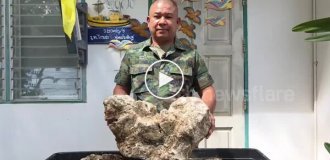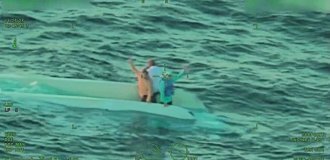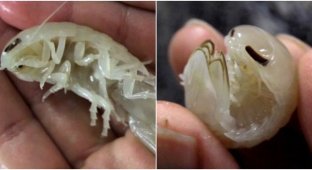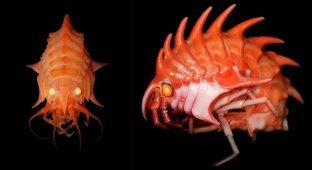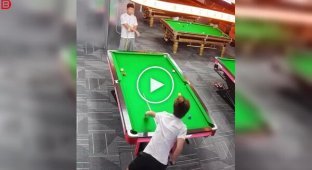Cystisoma: a life form that is extremely alien to us (10 photos)
There are so many wonderful animals in the world if you dig a little into the wilds of zoology! For example, cystisoma. This is not photoshop or neural network generation - but a real crustacean straight from the abyss. A scary, strange, crazy life form from the bottom of the ocean, possessing nanotechnology. 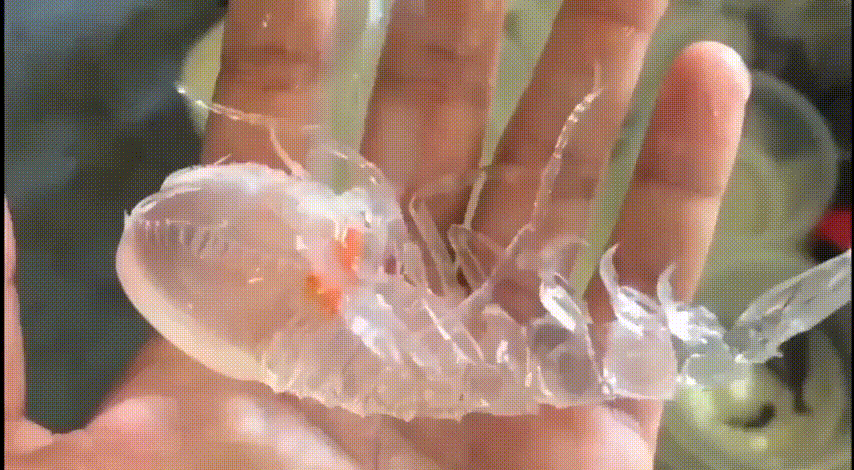
A smart guy!
Although cystisoma resembles shrimp, in fact, it is amphipods. Yes, yes, those same small crustaceans that are sold as fish food in every first pet store. But cystisoma does not live in ponds and rivers. Its abode is the dark depths of the oceans, where the sun's rays do not reach. The crustacean lives at a depth of 200 to 900 meters. 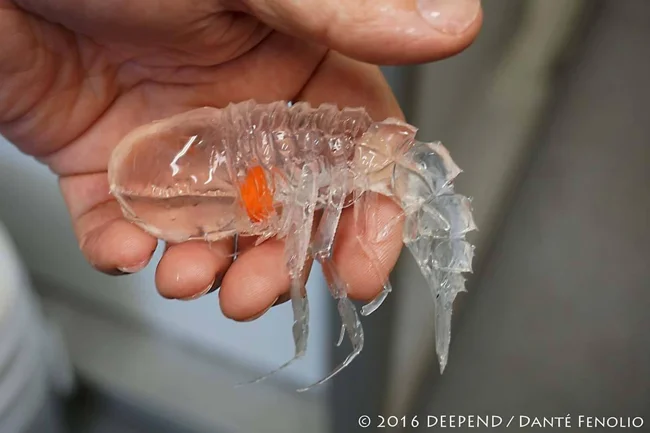
A student tries to wake up for the first class. As you can see, all is unsuccessful.
Hiding in the darkness of the deep sea, from a crustacean a couple of millimeters long, the cystisoma turned into a real titan - its body length exceeds 10 centimeters. Many species increase in size when they go into the twilight zone of the ocean at depths of more than 200 meters. This phenomenon even has a name - deep-sea gigantism. 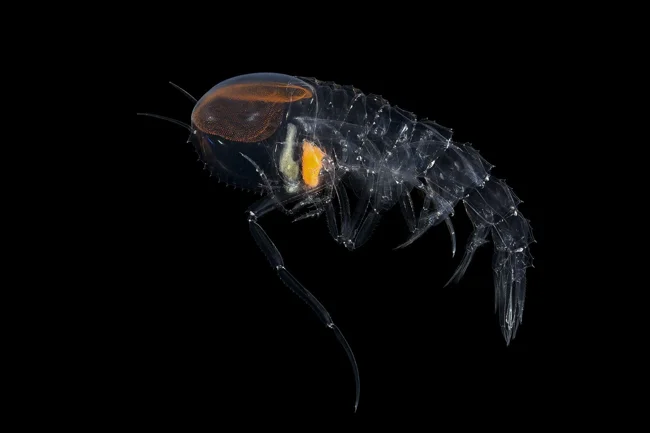
Oh no, the soul of the shrimp I ate has come for me!
The crustaceans, having increased in size, can no longer rely on their miniature size as a defense mechanism. That's why cystisomas were forced to come up with a new way to protect themselves. So arthropods invented almost complete invisibility! 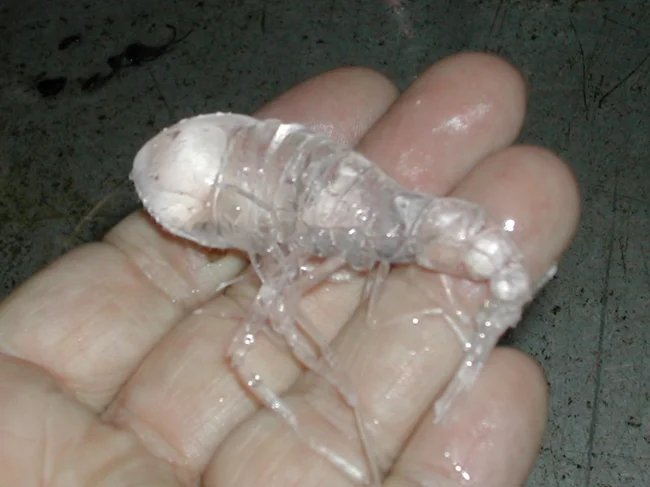
Not all cystisomas are equally big. However, by the standards of ordinary amphipods, these guys are real giants!
Not only is the body of the cystisoma transparent, but its refractive index is also close to the refractive index of water. This means that the silhouette of the invertebrate is blurred, and objects behind the arthropod are visible so clearly, as if the cystisoma wasn't there at all! 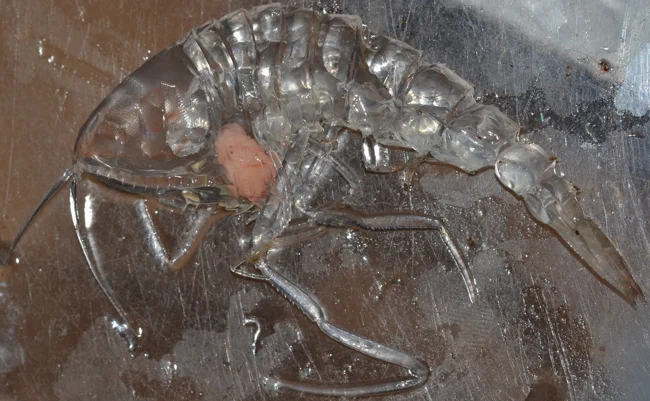
That is why on land the cystisoma looks like a plastic bag filled with water. The refractive index of its tissues is like water!
And even a small amount of reflected light does not reveal the animal's real position. The entire surface of its body is covered with a special nanomaterial: microscopic (smaller than bacteria) balls or pyramids. They scatter light like a top-notch anti-reflective coating. For reference: man-made anti-reflective coatings scatter 75-95% of all light, and the microstructures of cystisoma redirect 99.9% of sunlight! 
Microstructures of two different types of cystisoma. On the left, you can see how bacteria are spread out on them, as if on a rug.
But it must be admitted that the crustaceans have not managed to achieve complete invisibility. No matter how hard you try, the central ganglion, nerves and food in the intestines cannot be made transparent. They can give away the location. Cystisoma has also foreseen this problem: it notices predators earlier and quickly paddles its legs in the opposite direction. 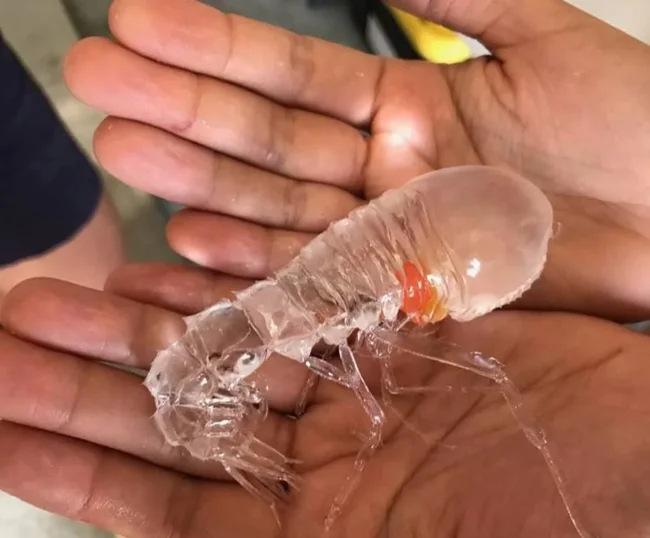
The round orange thing is the stomach of the cystisoma.
The eyepieces of the cystisoma are very different from ours. Instead of two complex eyeballs, there are thousands of chitinous lenses-ommatidia, from which the whole picture is assembled. Cystisomas have turned their entire head into one big eye. Crustaceans monitor the situation at almost 360 degrees, as well as the space above and below themselves. And they see, by the way, very well. Much better than a person at the same level of illumination. 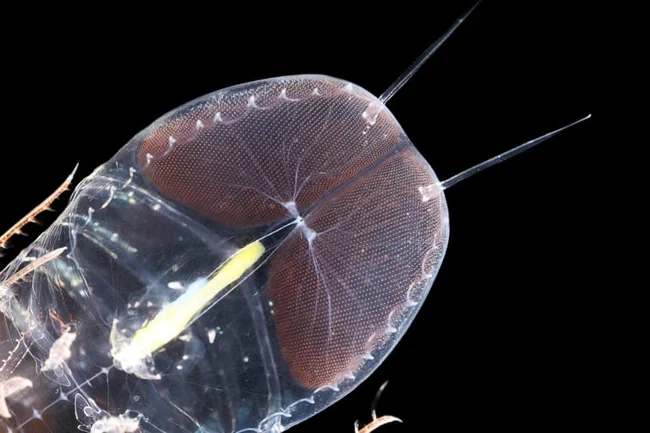
A big-eyed guy, of course. And that whitish web is his central nervous system.
But no matter how good our hero's eyes are, they only work as a short-range detection system. Cystisomas search for points of interest in the endless gloom using olfactory receptors on the tips of their antennae. Small arthropods, fish larvae and other food attract the attention of transparent predators with metabolic products. Crustaceans also find a partner by smell to continue their invisible race. 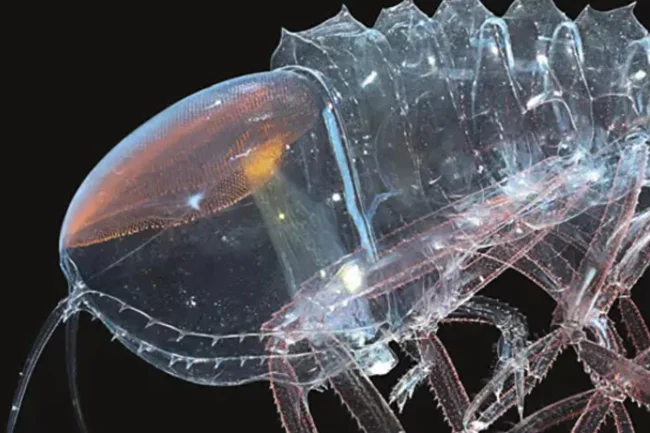
I'm watching you... Yes, with all one hundred million eyes!
Cystisoma spent all their imagination on original camouflage, so their interactions with each other are boring to the point of impossibility. When animals are not ready to reproduce, they simply ignore their fellows. And interactions during the mating season are limited to the ceremonial transfer of genetic material from male to female without any mating games or other body movements. 
From my heart and kidneys, I give you a bag of genetic material!
The female, in turn, sends it to a special pocket where the eggs have already been laid. They fertilize themselves there, and in about 20 days larvae hatch from them, which swim away as quickly as their father. And now there are already a couple dozen more transparent ghosts in the ocean. But no one will notice, invisible ones are not so easy to spot!

